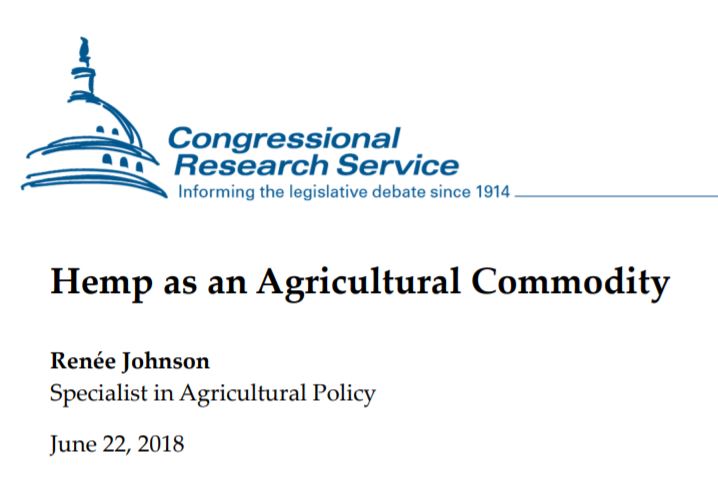 Recent market and import data for hemp products and ingredients show that the U.S. market has a highly dedicated and growing demand base, according to a recent report by the Congressional Research Service (CRS).
Recent market and import data for hemp products and ingredients show that the U.S. market has a highly dedicated and growing demand base, according to a recent report by the Congressional Research Service (CRS).
"Given the existence of these small-scale, but profitable, niche markets for a wide array of industrial and consumer products, commercial hemp industry in the United States could provide opportunities as an economically viable alternative crop for some U.S. growers," the report concludes.
CRS provides a broad overview of the growing U.S. hemp industry, which imported $67.3 million in seeds and fiber in 2017 and reached nearly $700 million in retail sales in 2016. The report details opportunities and challenges for this emerging industry.
Versatility
The global market for hemp consists of more than 25,000 products in nine submarkets: agriculture, textiles, recycling, automotive, furniture, food and beverages, paper, construction materials, and personal care.
Industrial hemp is cultivated for use in the production of a wide range of products, including foods and beverages, cosmetics and personal care products, nutritional supplements, fabrics and textiles, yarns and spun fibers, paper, construction and insulation materials, and other manufactured goods.
Imports
Hemp production in the United States is restricted due to hemp’s association with marijuana, and the U.S. market is largely dependent on imports, both as finished hemp-containing products and as ingredients for use in further processing (mostly from Canada and China).
Hemp imports to the United States—consisting of hemp seeds and fibers often used as inputs for use in further manufacturing—totaled $67.3 million in 2017. Canada is the single largest supplier of U.S. hemp imports, accounting for about 90% of the value of annual imports.
Progress in Congress
The 2014 farm bill provided that certain research institutions and state departments of agriculture may grow hemp under an agricultural pilot program. In subsequent omnibus appropriations, Congress has blocked the U.S. Drug Enforcement Administration (DEA) and federal law enforcement authorities from interfering with state agencies, hemp growers, and agricultural research. Appropriators have also blocked the U.S. Department of Agriculture (USDA) from prohibiting the transportation, processing, sale, or use of industrial hemp that is grown or cultivated in accordance with the 2014 farm bill provision.
Under current U.S. drug policy, all cannabis varieties—including industrial hemp—are considered Schedule I controlled substances under the Controlled Substances Act. Although hemp production is generally allowed following requirements under the 2014 farm bill, some aspects of production remain subject to DEA oversight, including the importation of viable seeds, which still requires DEA registration.
Congress has continued to introduce legislation to further advance industrial hemp and address these types of concerns in the next farm bill. Introduced legislation as part of the Industrial Hemp Farming Act—first introduced in the 109th Congress and greatly expanded over the past few years—seeks to further facilitate hemp production in the United States but would also amend the CSA to specify that the term marihuana does not include industrial hemp. An expanded version of this bill was introduced in the 115th Congress in both the House and Senate (H.R. 5485; S. 2667). Many of the provisions in these bills are included in the Senate version of the 2018 farm bill legislation (S. 3042) that is now being debated in Congress. Similar provisions are not part of the House version of the 2018 farm bill (H.R. 2). Myriad other bills introduced in both the House and the Senate would further amend the CSA and other federal laws to address industrial hemp.
Challenges
Current challenges facing the industry include the need to re-establish agricultural supply chains, breed varieties with modern attributes, upgrade harvesting equipment, modernize processing and manufacturing, and identify new market opportunities.